The challenges of a bumper crop
- On: September 03, 2014
 0
0
This is absolute peak season. We have five coolers running right now, and each is full the night before deliveries. The trucks are stuffed. Our hard-working crew has kicked into high gear. These peaks are inevitable and desirable. How do we handle these moments? Here are our ‘pressure valves’, our strategies to make good use of abundant produce:
- First, we stuff the CSA boxes. We want to share as much as we can with you members. This week’s box is full and heavy again. Fortunately, it’s summer produce that everyone loves.
- Steve encourages our store customers to put abundant items on sale. For example, Willy Street Coop has our watermelons on sale this week.
- We sell extra produce to you folks. This is the time of year when we can spare some tomatoes and peppers from the CSA boxes. Freeze or can them and enjoy in winter.
- We donate less-than-perfect produce to Second Harvest Foodbank, which distributes it to food pantries, soup kitchens and families in need.
- We are going to can tomato juice again this year! That will consume 1500 lb ripe tomatoes, and means there will be tomato juice in your CSA boxes next year. This is a great way to capture perishable tomatoes at peak flavor.
- We find ourselves with an abundance of round watermelons over 25 lb. Not even the stores will take melons this big. We are donating 1000 lb of these melons to FairShare’s Bike the Barns fundraiser so they can feed them to thirsty bicyclists.
.
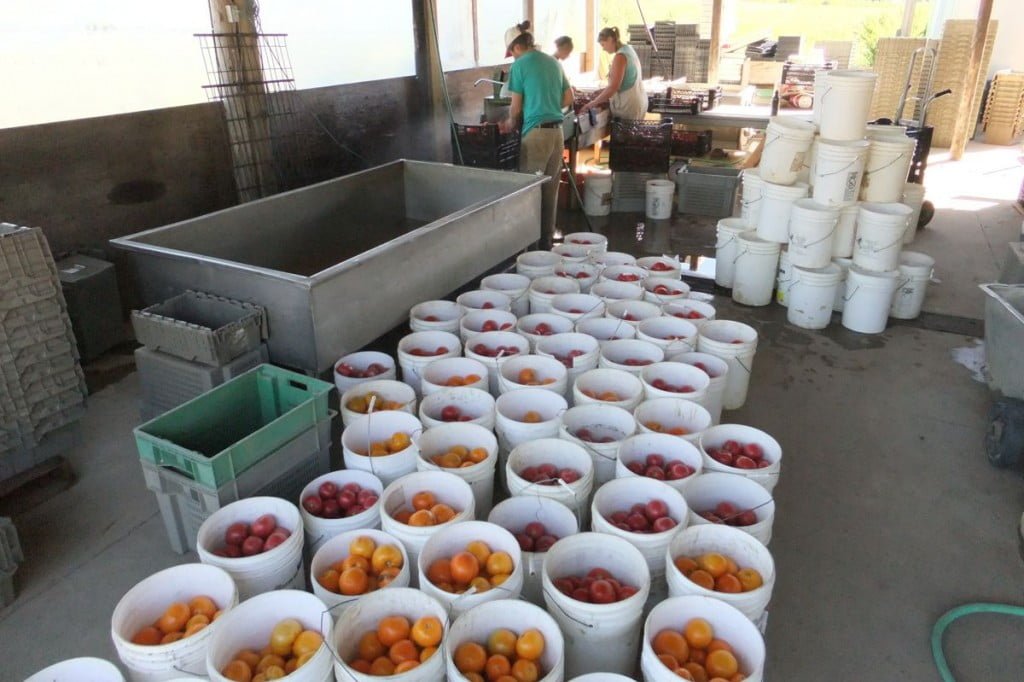
A sea of tomatoes for the CSA boxes. At back, Jory, Boi and Maggie wash tomatoes.
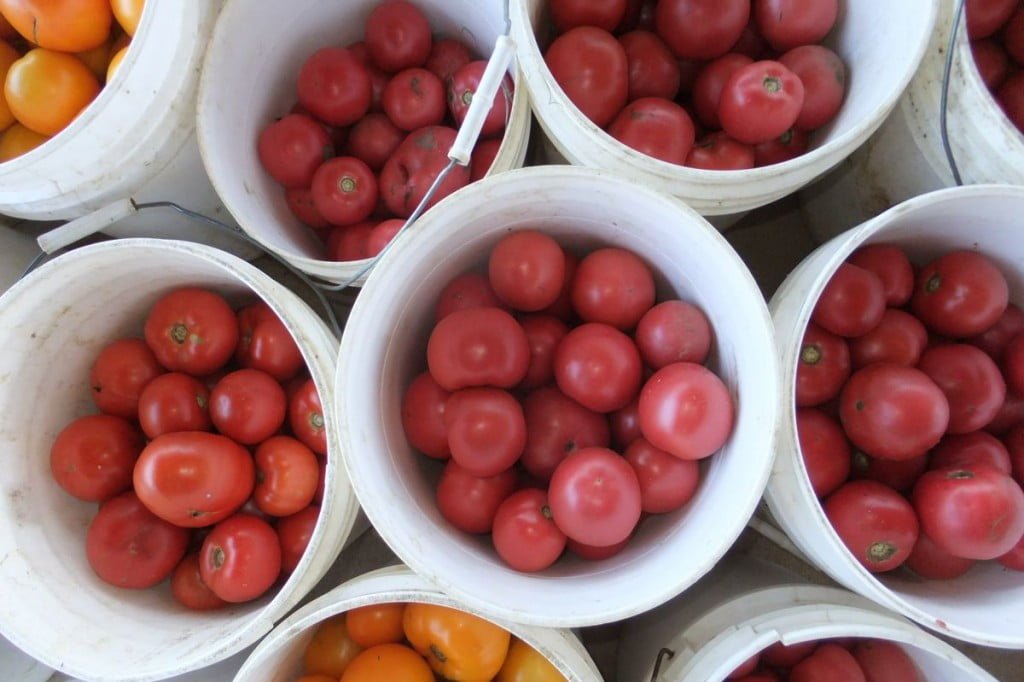
Yellow, red, and pink slicing tomatoes, ready to be washed.
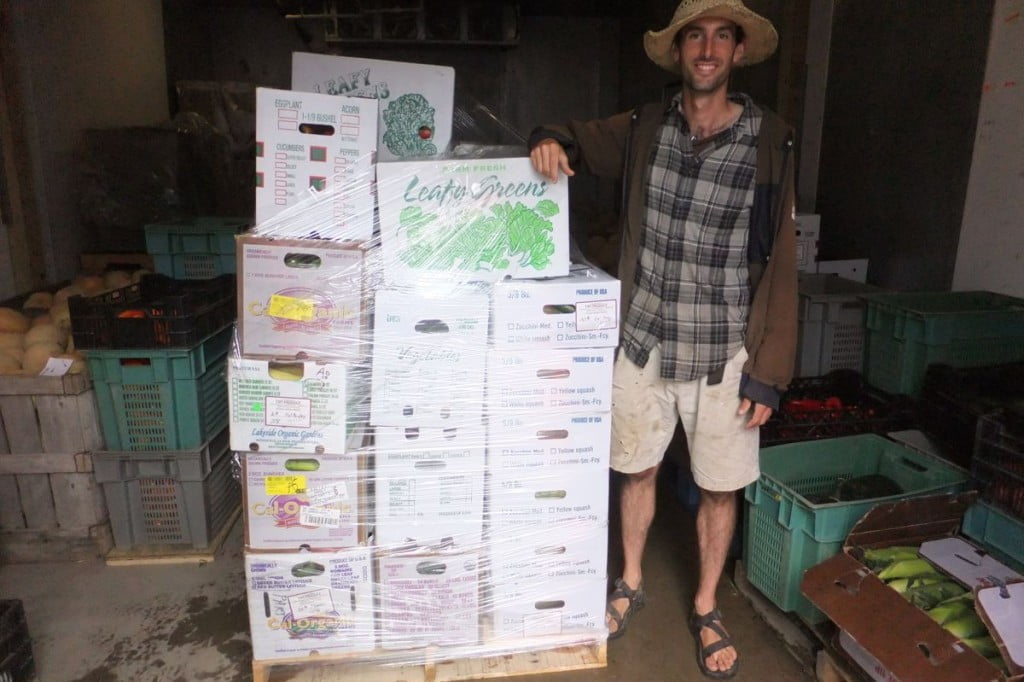
Our packshed manager Jon with a donation ready for Second Harvest. We donate #2 grade produce each week.
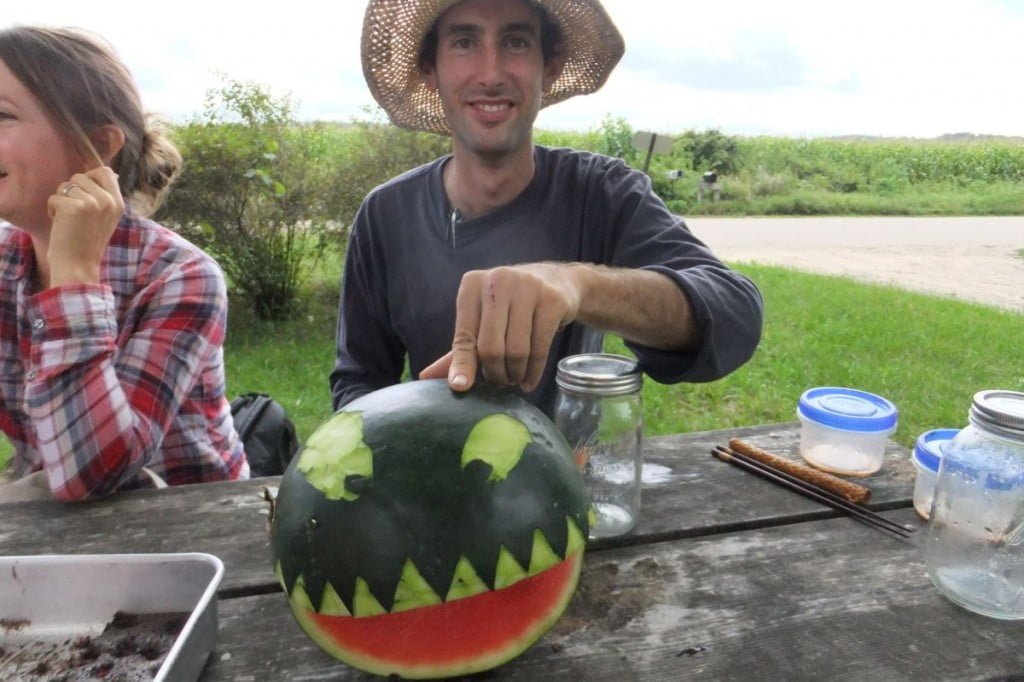
Finally, we try to be creative with our excess produce. Jon and friend, with Karen at left.
Veggie list and veggie notes (9/4/14, week #16, purple EOW)
Red watermelon
Sweet corn, 4 or 5 ears
Cauliflower OR edamame soybeans OR cherry tomatoes
Red frying peppers, about 2
Orano peppers, about 3
Poblano chiles, 3
Slicing tomatoes, 3.5 lb
Leeks, about 1.5 lb
Garlic
Basil, 1 sprig
Zucchini, 1
An heirloom tomato OR cherry tomatoes
Next week’s box is likely to contain red cabbage, red potatoes, garlic, cauliflower or broccoli, lettuce, scallions, peppers, tomatoes and more.
Watermelon – This is probably the last melon. We have simply run out of melons that will fit in the CSA boxes, plus the fall produce is ripening. You can still buy our large melons at Willy Street Coop, Outpost Natural Foods, Basics Coop and Paoli Natural Foods. We will supply them with melons for a few more weeks.
Sweet corn – This sweet corn variety is not particularly sweet. It’s a new variety for us. However, the ears are big and the flavor is terrific. This corn is excellent cut from the cob and added to dishes. We tried three new sweet corn varieties this year because our standard variety was not available this year. This one was very productive but I think we’ll look for sweeter varieties next year.
Edamame soybeans (bundle of stems with pods) – It was not an abundant year for edamame. Only one spring planting survived, sparsely. We’ll try again next year.
These edible soybeans are a treat. Pull the pods from the stem and wash well. It helps to submerge the pods and rub them together. Boil in water until the pods have split and the beans are quite tender. Season with salt and pop the beans out of the pods into your mouth. This Japanese specialty is becoming more and more popular in the USA.
Storage: Remove the pods from the stems promptly and refrigerate.
Red frying peppers and Orano (orange) peppers – These peppers are all sweet. Some of these peppers may be part green and part red (or part orange). You can distinguish them from the spicier poblanos because the poblanos are solid green.
Poblano chiles (dark green, shiny, triangular) – These chiles have low-to-medium heat and great flavor. Most I’ve cooked so far this year are milder than usual, but a few were corkers.
Leeks (look like big scallions) – These alliums have a milder flavor than onions. Nonetheless, they can be used in recipes that call for onions. To wash, split the leek lengthwise, from the green tops about halfway to the base, leaving the base intact. Rinse well under running water, separating the layers to flush. If necessary, split the leek further if soil has penetrated more than halfway down the leek. Shake dry. Leeks are generally eaten cooked. They can be sauteed, steamed or roasted. Intact leeks will store 2 to 3 weeks if covered loosely and refrigerated. The outer leaves will yellow. Just peel them off and discard. The inner leek layers will be fine.
Garlic – This batch is from John Hendrickson of Stone Circle Farm again.
Basil – We’re sending another small sprig of Thai basil. It is tolerant to the downy mildew disease spreading across Wisconsin, so we still have a small amount to share.
Heirloom tomatoes (large tomato that’s not in the paper bag with the other tomatoes) – Heirloom tomatoes are full-flavored but delicate. If you receive one this week, please handle it gently. These fragile beauties bruise easily. You might have to ripen your heirloom tomato at room temperature for a day or two. Don’t let it get overripe.
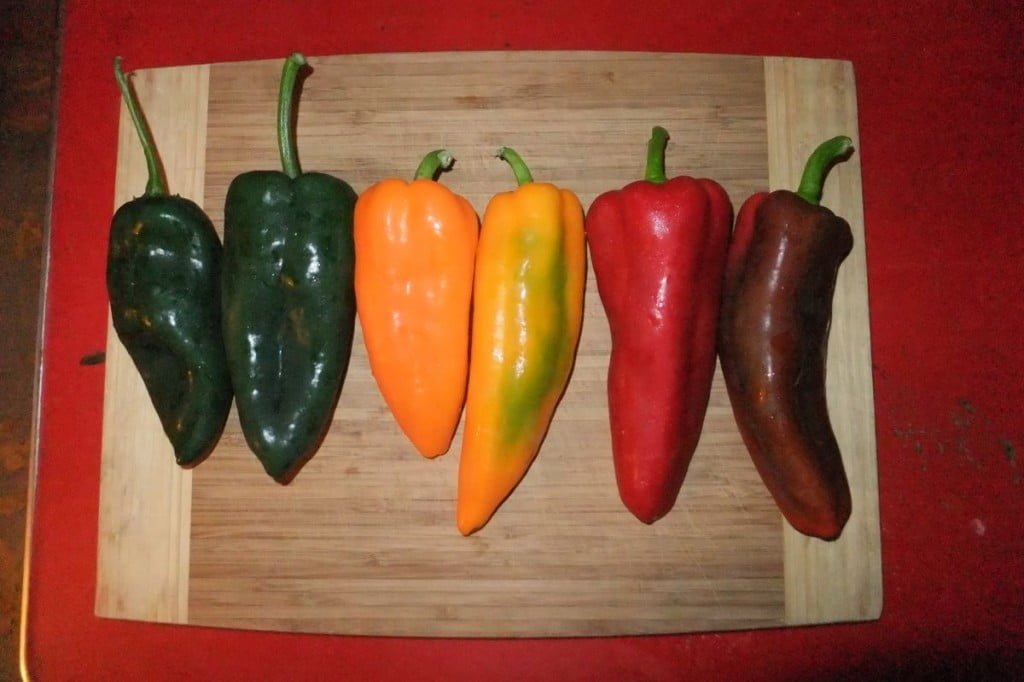
Poblanos (left, low-to-medium heat), Oranos (center, sweet), and red frying peppers (right, sweet). The Oranos and frying peppers might have a bit of green. The poblanos will be all green so you can recognize them.



